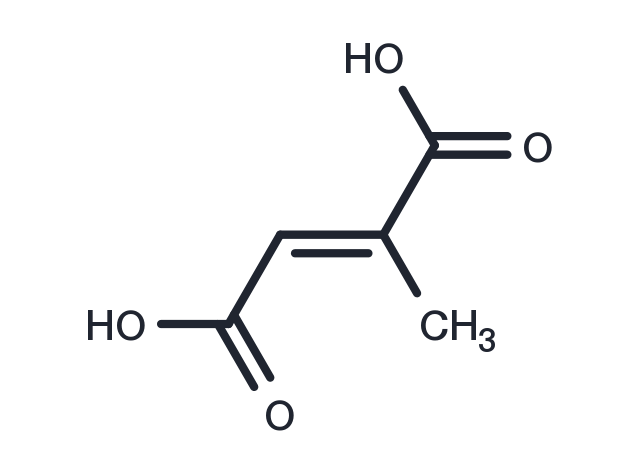Powder: -20°C for 3 years | In solvent: -80°C for 1 year


Mesaconic acid (Methylfumaric acid) is used as a fire retardant, as recent studies revealed this acid is a competitive inhibitor of fumarate reduction.

| Pack Size | Availability | Price/USD | Quantity |
|---|---|---|---|
| 5 mg | In stock | $ 50.00 | |
| 10 mg | In stock | $ 75.00 | |
| 25 mg | In stock | $ 128.00 | |
| 50 mg | In stock | $ 192.00 | |
| 100 mg | In stock | $ 287.00 | |
| 1 mL * 10 mM (in DMSO) | In stock | $ 52.00 |


| Description | Mesaconic acid (Methylfumaric acid) is used as a fire retardant, as recent studies revealed this acid is a competitive inhibitor of fumarate reduction. |
| Synonyms | Methylfumaric acid, Mesaconate, Kyselina mesakonova |
| Molecular Weight | 130.1 |
| Formula | C5H6O4 |
| CAS No. | 498-24-8 |
Powder: -20°C for 3 years | In solvent: -80°C for 1 year
DMSO: 55 mg/ml (422.75 mM)
You can also refer to dose conversion for different animals. More
bottom
Please see Inhibitor Handling Instructions for more frequently ask questions. Topics include: how to prepare stock solutions, how to store products, and cautions on cell-based assays & animal experiments, etc.
Mesaconic acid 498-24-8 Others Methylfumaric acid Mesaconate Kyselina mesakonova inhibitor inhibit
